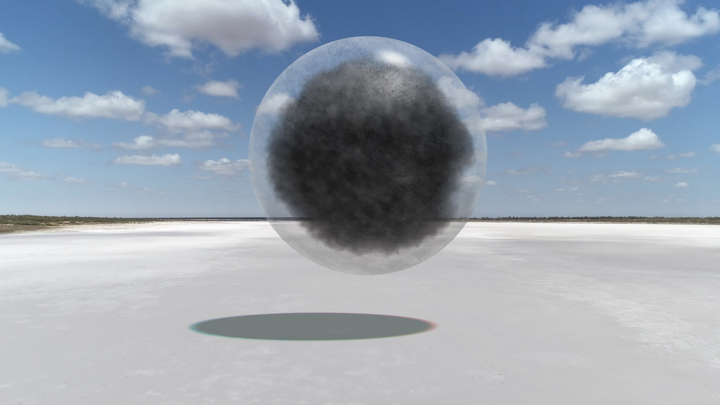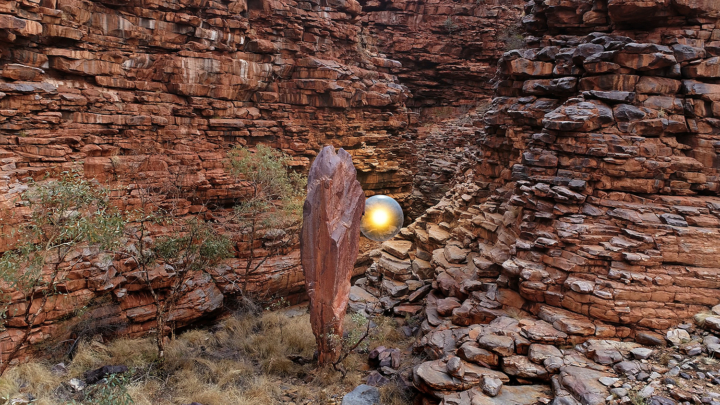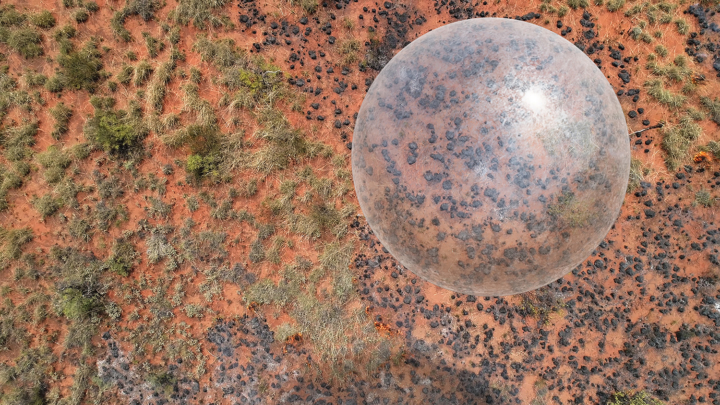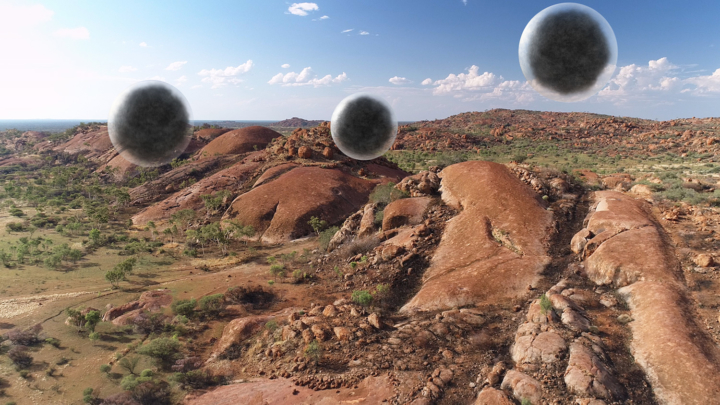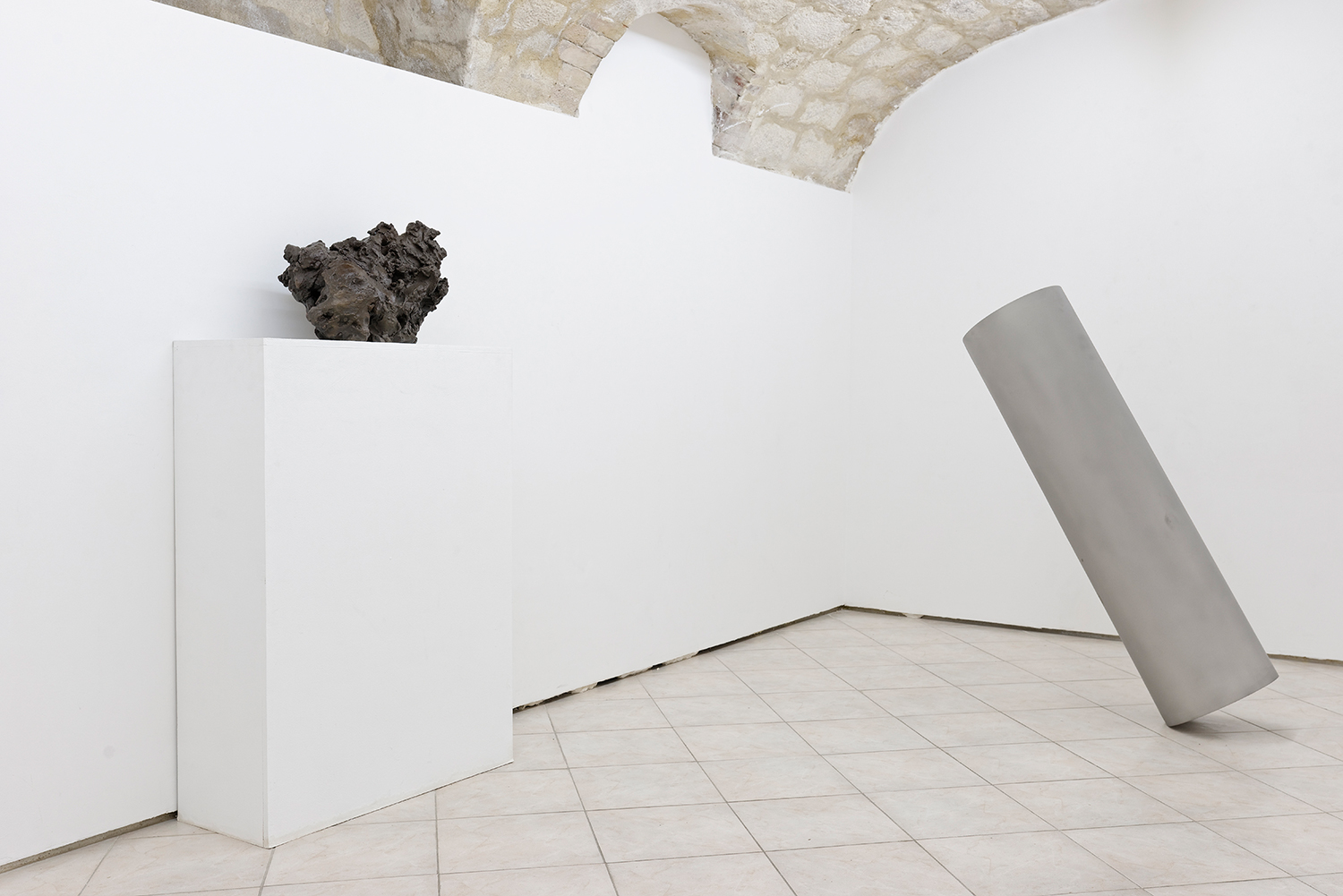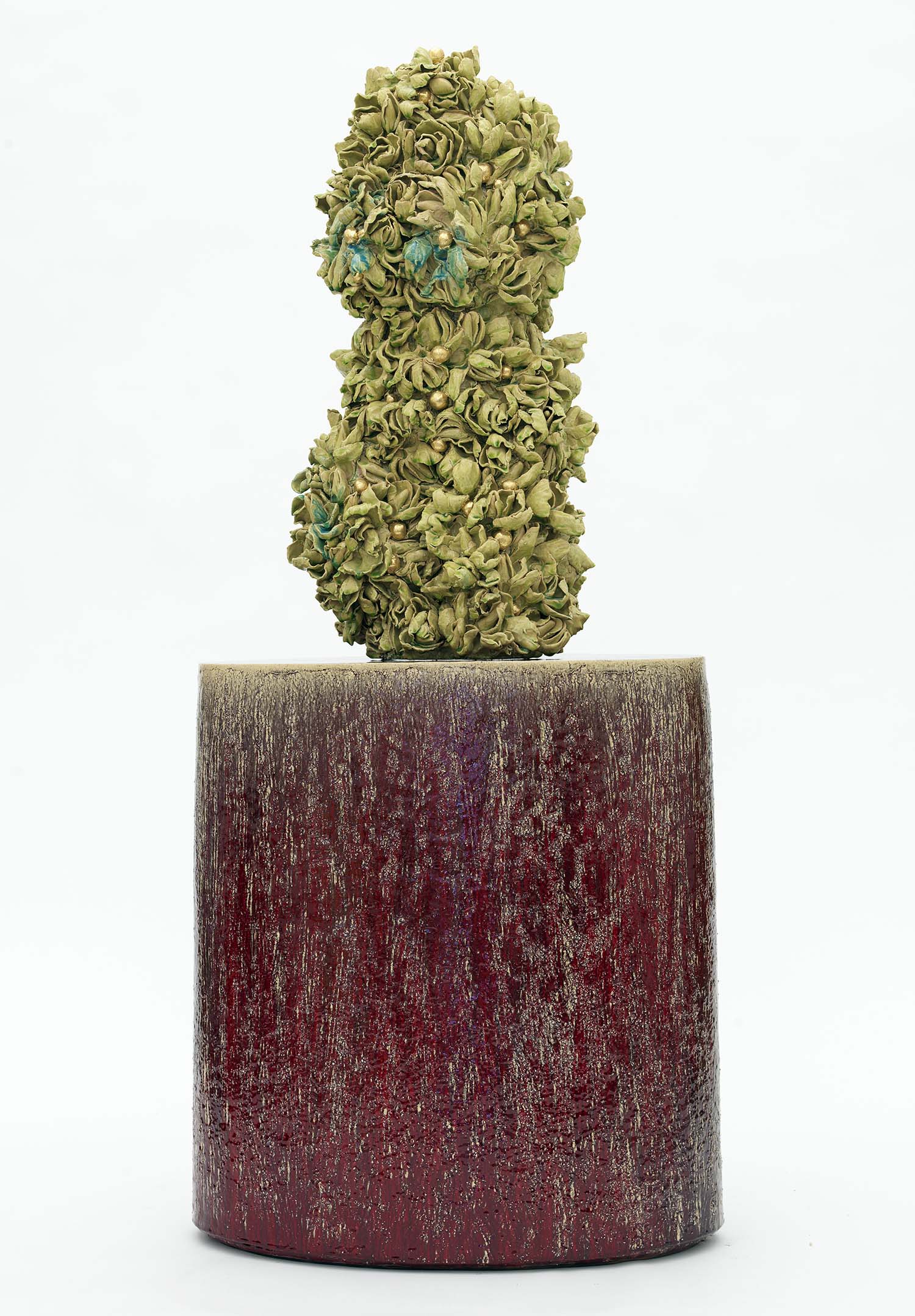Claudio Santoro in conversation with Laurent Grasso at Galerie Perrotin in Paris.
Claudio Santoro: The centerpiece of your recent exhibition “OttO” at Perrotin is a film shot in Yuendumu, Australia. You mentioned that indigenous landowners granted you access to sites according to Aboriginal protocol. I take it that this project is largely rooted in their complex history, which you said you wanted to “evolve instead of reflect upon.” Were you able to connect with the Yuendumu community while conducting research in the Northern Territory?
Laurent Grasso: The project doesn’t assume an « unreflexive approach » towards the history of aboriginal people. On the contrary, the very existence of the project was conditioned by a connection with the Yuendumu community. Like many of my projects, it was very intuitive from the beginning. I had an intuition that I would connect with this history and geography, so I asked that my research trip involve traveling to the Australian desert. There, we found many different communities and languages — there is not one Aboriginal culture — so we started searching to find an honest connection between my work and different parts of Australia. We were interested in the Northern Territory and Perth, as there are very strong electromagnetic fields there due to the metal mines. Art historian Darren Jorgensen and I started with very broad research, and discovered different kinds of phenomena and stories in the country that we collected over one year. I like contemporary mythology, as I have always viewed my work as somewhat anthropological, so we studied the light phenomenon known as Min Min light. We were also interested in caves with Aboriginal rock paintings in them, which due to a certain bacteria maintain very strong colors. This temporality and activation of power remained interesting for me, so we began to collaborate with the Warlpiri community, who introduced me to The Songlines by Bruce Chatwin, and this began an exchange about Aboriginal people navigating their territories through stories and chapters in the book in relation to cosmology and astronomy.

Many cultural bodies in Australia rightly acknowledge the history of Aboriginal inequality and dispossession in their programming, which becomes problematic as many of these initiatives are underpinned by a colonialist advantage. Did this political separatism influence the gaze of your research or is this an outsider story?
We had to take these political dynamics into account but We were not intending to talk about these main issues directly, we were more interested in a normal exchange which required being aware of their history.That being said, and beyond the perspective of the work itself, the obvious and clear message to restate is that the aboriginal people want to regain possession of their land. However, My work is not directly political or documentary in that I don’t want to illustrate a singular message and tend to dissociate myself from the kind of art that instrumentalizes political struggles and their victims under the pretense of serving their cause. Instead, We wanted it to be like a usual film collaboration. It could seem disconnected from this issue, but their life is not just about this long-term fight whose importance I however do not mean to minimize. It is also a daily life with an art center and practice. The Sydney Biennale informed us about the necessary protocols for an artist who wanted to collaborate with Aboriginal people over which the Warlpiri community has not much of a say and which at times even impeded the project. What allowed the project to exist was less the help of institutions than a shared enthusiasm with the people in Yuendumu.
I had one picture in mind to connect a scientific measuring of reality with an abstraction of their practice. I had another picture of this experiment in which some Buddhist monks are meditating under electroencephalography: a method of electrophysiological monitoring, and I wanted to connect these fields. We used hyperspectral thermal cameras to continue exploring this nonhuman perspective, which I’ve worked with in the past. It is a machine filming something totally unknown to itself. I was really interested in the research of Eduardo Kohn, and this idea of anthropology and geology becoming studied from a futuristic perspective. This was a way in which I was able to work without knowing too much about these methods of research, using futuristic tools to study something old and sacred, and putting these two fields together to create this imaginary fiction, in which it could be possible to visualize the radiation of these natural sites.

There are moments in the film in which we see acid yellows oozing out of rock crevices, and a new lexicon emerges between the viewer (human or otherwise) and the land, which is something I see as inextricably linked to Aboriginal Dreamtime.
This is what the Aboriginal people said of the project. I didn’t try to express their point of view or appropriate their forms; it was an interpretation, or re-creation, the real stories of how they interpret the country are secret and, before starting the project, I knew that being interested in the aboriginal traditions meant preserving their secrets. I had to find a way to show the status of these places without access to their historical belief system. So I created this sense of fear, as a kind of visual emanation or exploration of what could be sensed in these sacred sites.
Do you see a sequential narrative in the film?
My work more often deals in a visual narrative or sensation, or something that suspends the viewer in a kind of floating moment, where different meanings are crossing each other, rather than clarifying one particular message or story. There are different stories together in the film. This what I try to do with all the objects in the exhibition at Perrotin Paris — objects crossed by different forces, which create a tension that goes in many directions. I like this floating status between one state and another. In alchemic exercises, one might metaphysically charge something in order to alter its state. My work is in line with this potential power along with a certain radiation: it’s not just readymade objects — I try to create things, and here it becomes obvious in the use of frequencies. The spirals that you can see are inspired by Georges Lakhovsky, who created tools to cure people of illness using frequencies, most famously with the Multiple Wave Oscillator. Here, you have a portrait of Lakhovsky, and of the original machinery he created. I am interested in the power of the machine.

